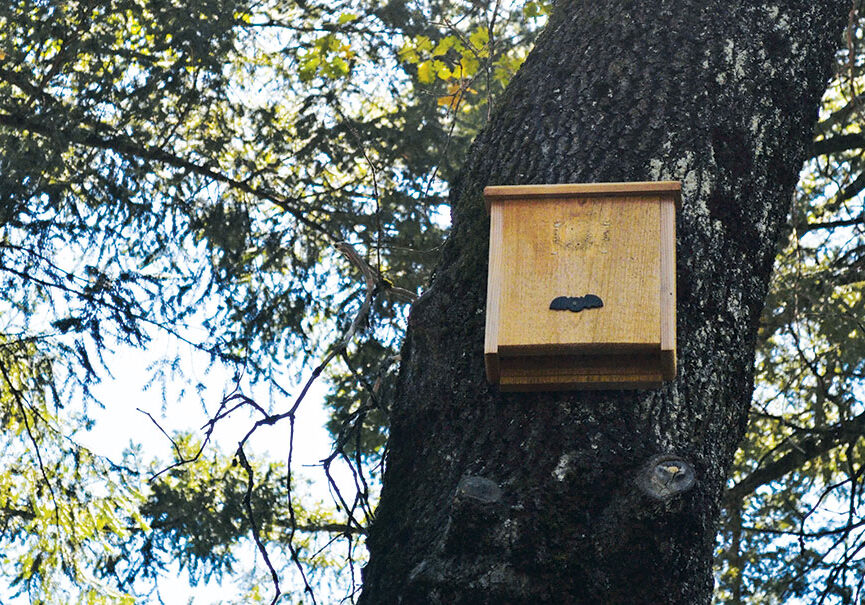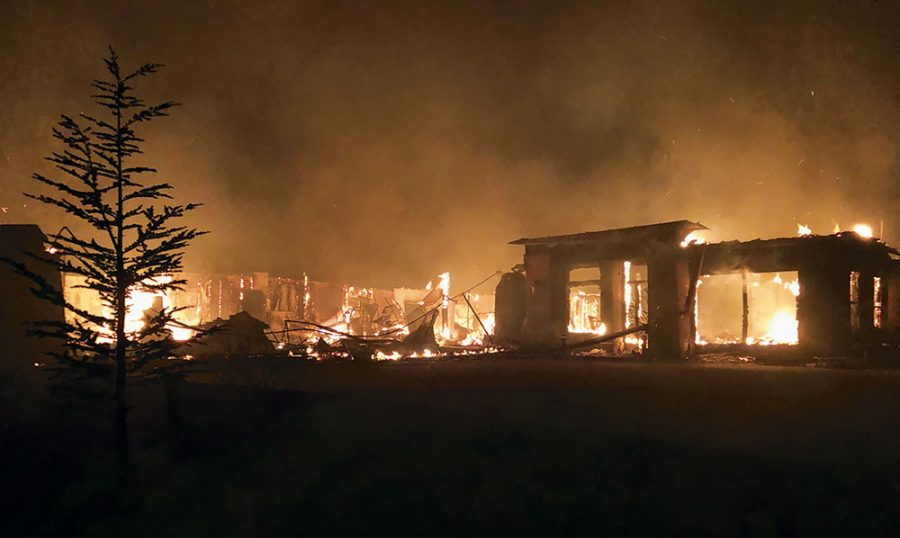Plan Ahead To Protect Your Family Should Disaster Strike
When it comes to home disasters, fires are the most common and can be the most deadly for young children. Preparedness and planning save lives, but nearly three-quarters of Americans have never developed or practiced a home fire escape plan.
I know what you are thinking: “The chances of my house catching on fire are remote. House fires only happen on the news. To other people.”
That’s what I thought, too, until my husband and I stood shivering in the snow while firefighters crashed through our burning home and reporters buzzed around.
A brand-new lamp shorted out while we were at work, turning our bedroom into an inferno that blasted out our windows. Energized by gulps of air, it proceeded to lick its way toward the roof.
According to the National Fire Protection Association (NFPA), fires claim as many as 400,000 homes in the U.S. each year. Although we were displaced from our home for several months, we counted our blessings that no one was hurt or died. On average, seven people die each day in house fires across the nation.
Curious youngsters who play with fire are also cause for serious concern. According to the American Red Cross, children under five are twice as likely to die in a house fire compared to the rest of the population. Frightened kids who don’t know how to escape or what to do, panic.
Take Steps to Help Keep Your Kids Safe
Visit the fire department.
From the time my boys were toddlers, I’ve taken advantage of organized tours to our local fire department. The firefighters show the kids how they change into their protective gear. I could see why firefighters worry about kids hiding from them during a fire. Dressed in their masks and gear in the station, they look alien. But they must look terrifying and monstrous while fearlessly marching through dark smoke and flames searching for scared children and pets.
Check out FIREPALS.
Siskiyou County has an outreach program called FIREPALS, which consists of firefighters, dispatchers, and prevention officers from Cal Fire. The group presents educational material to local schools and at community events. Safety techniques such as “stop, drop, and roll” are covered, according to Brady, as well as how to call 911 in an emergency. For older students, “we will go to their school and do presentations on fire ecology, and fire history.”
Create and practice an escape plan.
When my son was in second grade, the teacher assigned the kids to come up with a fire escape plan. Together, we drew a plan of our house. Then we walked through it to come up with two ways out of the house in the event of a fire. We ran a drill, crawling through the house to get to the exits and designating a family meet-up spot. This was a valuable exercise to see how quickly we could get out and if there were any flaws in our design.
Get a ladder.
Got a two-story home? “Get a ladder,” says Nicole Feltz, an American Family Insurance agent. “It will allow the family and kids to escape if you can’t get down the stairs.” Store the ladders under upstairs beds.
Maintain your property.
Maintaining your outside property is important during the fire season, according to Brady. Grass should be “mowed down less than four inches” she advises. “Folks need to make sure there is no leaf litter in their gutters, and woodpiles are moved at least 30 feet away” from structures.
Test your smoke alarms annually.
Choose a holiday, anniversary, or birthday to make it easier to remember. We tested our smoke alarms while practicing our escape plan. NFPA says that nearly half of fire deaths are prevented simply by having working smoke alarms.
Inventory your possessions before disaster strikes.
Sortly and other similar home inventory apps, let you take an inventory by storing pictures of the items in your home. File or scan copies of receipts for large ticket items. “If you update a deck, fence, or kitchen, take a picture even of the receipt,” Feltz says.
Purchase a fireproof safe.
My husband and I received a fireproof safe soon after we were married as a Christmas gift. The box seemed like an odd gift to me at the time. But for less than $50, this safe proved priceless, saving us a few headaches.
Six P’s
In the event of a wildfire, Brady recommends an evacuation plan that contains “the six important ‘P’s’:
- People and pets
- Papers, phone numbers, and important documents
- Prescriptions
- Pictures and irreplaceable memorabilia
- Personal computer hard drives and disks
- Plastic (credit cards, ATM cards) and cash.”
In the end, we were lucky. My husband and I had each other, reliable insurance and many friends offering support. The house was rebuilt, our lives restored and things replaced.
Now that we are parents, our two little risk factors have raised the stakes. I’m not gambling on their safety. To me, that would be like playing with fire–a fire I’m not sure I’d ever recover from.
When Disaster Strikes, It Pays to be Prepared
In the wake of the devastating fires that have impacted much of the North State, wildfire and disaster preparedness has been on the minds of many families. Preparing for a house fire is essential, as one of our regular writers, Christa Melnyk Hines, found out when her family lost their home in a fire after an electrical malfunction in a lamp.
For families living in areas that are likely to be impacted by wildfires, preparedness is equally as important. We reached out to Suzi Brady, CAL FIRE Siskiyou Unit Fire Prevention Specialist and Information Officer, who offered some additional tips and information on how families can prepare themselves and their property in the event of a wildfire.
Be Safe
One of the biggest issues that firefighters come across when trying to protect homes is lack of survivable and defensible space. Survivable and defensible space refers to the area between a house and an oncoming wildfire. Creating and maintaining this space reduces the wildfire threat and provides an opportunity for firefighters to effectively defend the house and property.
- Start with the house itself and work outward.
- Use as many noncombustible materials as possible. Since the roof is typically the first part of a house to catch fire, treating it with fire retardant coating is recommended.
- Radiant heat can cause windows to blow out. Thermal pane or tempered glass windows, fire retardant drapes, and moving furniture away from the windows can reduce the risk of items inside the house catching fire.
- Metal mesh screens over attic and foundation vents (The recommended size is 1/16th of an inch) can prevent stray embers from getting in.
- Keep gutters clear year-round, and clear any leaves and branches away from wood siding.
- Keep lawns short and watered frequently if possible.
- Stone walkways or concrete as part of the landscaping can create fire breaks, as can irrigation systems.
- Make sure the property is easily accessible to fire personnel.
- Keep considerable horizontal space between combustible fuels (propane tank, firewood, trees, ground vegetation) and the house.
- Clear as much vertical space as possible. Remove dead or diseased trees as well as low hanging branches. These tactics are designed to keep the fire as close to the ground as possible, where it is easier to fight.
As seen with the unprecedented behavior of the Carr Fire, there is no guarantee that defensible or survivable space will protect your home, but it is still very much worth the effort to make your property as fire-safe as possible.
For more information on survivable and defensible space:
Posted in: Community
Comment Policy: All viewpoints are welcome, but comments should remain relevant. Personal attacks, profanity, and aggressive behavior are not allowed. No spam, advertising, or promoting of products/services. Please, only use your real name and limit the amount of links submitted in your comment.
You Might Also Like...

The Marvelous Misunderstood Bat
What hangs upside down, loves mosquitoes and sleeps all day? A bat, of course! Bats have been both revered and feared, by ancient and modern folk alike. They have carried […]
Think Before You Flush!
Who wants their toilet to overflow? How about your kitchen sink backing up? Yuck! An ounce of prevention is worth a pound of cure. In the case of your sewer […]

Dive into Swimming in the North State
To anyone with an aversion to large bodies of water, swimming may seem like a sport reserved for those who don’t realize humans lack gills and fins. In a state […]
FOCUS Film Festival: Cultivating Cooperation, Education, Inspiration
Most people view autism spectrum disorder as just that, a disorder. But if you ask Sharisa Joy Kochmeister, “Autism is a gift disguised as a dilemma.” Sharisa was thought to […]




